LessLoss New DFPC Reference AC Cords
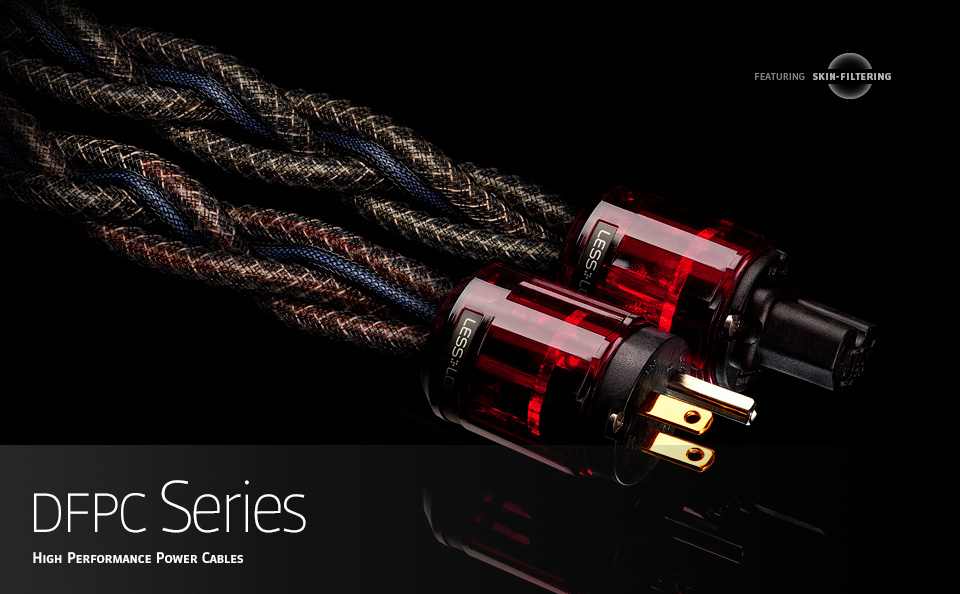
The New Reference!
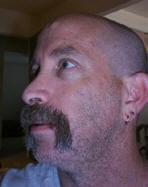 I was in a bit of a jam, having requested their latest power cords from LessLoss, then a couple of weeks later getting a new transport and DAC to review before the cords had arrived. Well, the cords finally got here and have been sitting in their wrappings in the corner.
I was in a bit of a jam, having requested their latest power cords from LessLoss, then a couple of weeks later getting a new transport and DAC to review before the cords had arrived. Well, the cords finally got here and have been sitting in their wrappings in the corner.
Now the review’s done and PS Audio’s extraordinary PerfectWave digital source is resident chez Lichter. Yep, I’ve got a new digital source and it’s a real beauty. (Just in time for the announcement of PS Audio’s revolutionary Direct Stream DAC! Do not tell me the audiophile gods lack a sense of irony.) And at long last, the LessLoss DFPC Reference cords are ready to make their debut in my stereo.
One small logistical problem though: each time I play a CD I notice something new (and often pretty amazing) coming from the PWT/PWD combo. It’s an exciting situation for an audiophile, but hardly an ideal one for a reviewer—adding yet another variable to the mix. So I thought I ought to really get to know the new front end first, to listen to a lot of different CDs, and that was going to take awhile. Otherwise, differences I hear might be attributable to the either or both of two obvious sources.
The solution I came up with, to obviate waiting, is to suspend my reviewer’s judgment, install the new DFPC Reference cords and burn them in while just getting gradually familiar with the sound of the system. At midpoint of this operation, I swapped the Reference cords powering the monoblocks (high current) with those powering the front end (low current), thus attempting a certain equality of burn-in conditions. The actual evaluation would come later: switching back to my DFPC Signatures and listening for changes in sound quality. Rather the reverse of the usual procedure.
It’s been many years since I received LessLoss’s first high-end cord, the Dynamic Filtering Power Cord. I had been very skeptical of the whole power cord aspect of being an audiophile, but within literally seconds of powering up with the DFPCs, my skepticism was replaced with astonishment, followed by a determination to own those cords; a determination that was shared, for the first and only time, by my wife. They made more difference to the sound than any other electronics change I’d made over the years. We both felt this was simply too good to be without.
What’s come down the pike since then from Louis Motek have been refinements and enhancements of a basic design that filters noise with absolutely no dynamic restriction.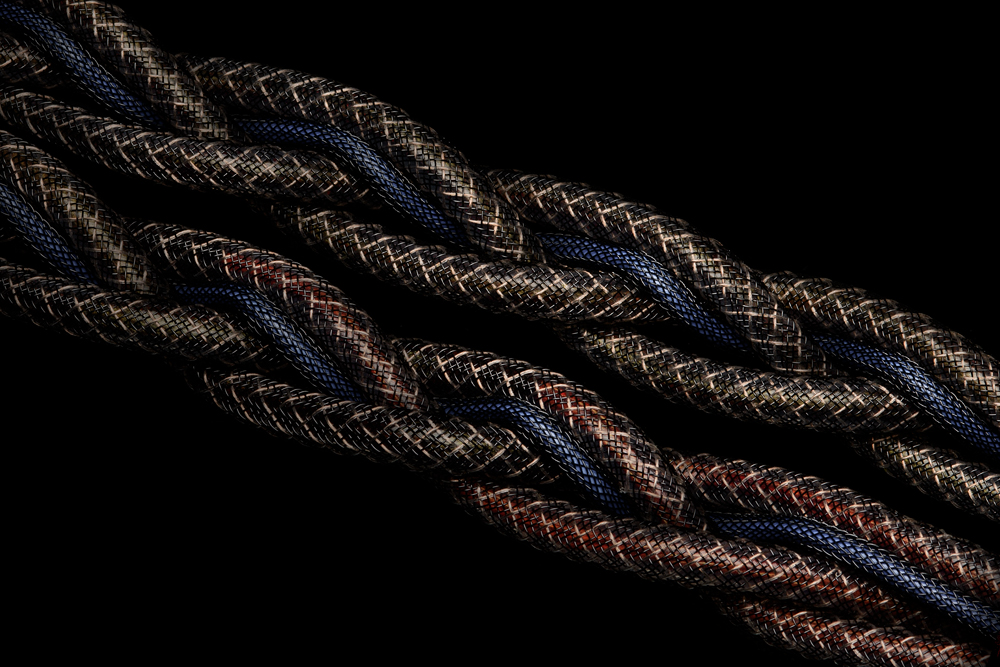
Structural/Operational Differences. The ingenuity of the DFPC design in utilizing the well-understood phenomenon of skin effect continues to impress me. It is a very clever approach and does not, as far as I can figure, involve any audiophile hocus-pocus. I’ve written before in this venue about earlier versions of these power cords and can refer you to the Stereotimes archive, but I will offer here a brief summary of their construction and theory of operation.
Skin effect is the common name given the behavior of high frequency alternating current in a conductor. At the transition point of current direction, the collapsing electromagnetic field generates an eddy current in the conductor coincident with and opposite to the new direction of current flow. As a result, the new current flow is “pushed” away from the axis of the conductor. This happens 50 or 60 times a second with AC power but at such frequencies skin effect is negligible. At higher frequencies skin effect is not negligible. At gigahertz frequencies all of the ‘electron flow’ occurs at or near skin level. Which is why high-current conductors for radar consist of hollow pipes.
The problem with the AC delivered to our homes is that is rife with noise, a subsuming term for the thousands of unwanted frequencies present in the environment that get picked up by conductors. Most of this noise is in the form of very- and ultra-high frequency energy. Exactly: most of the noise travels on the skin. LessLoss cords are unique in exploiting this phenomenon.
The plugs used for both Signature and Reference cords are Oyaide model P/C-079. The fanatical attention given to materials and manufacturing by Oyaide is the stuff of audiophile legend. The 079 is incontestably one of the finest plugs that money can buy. LessLoss doesn’t use them for that reason. They use them because they tried high quality plugs by a number of high-end manufacturers and the 079s (not, incidentally, Oyaide’s most expensive plug) sounded best with LessLoss wire.
Which leaves the wire treatment that is the heart of the LessLoss design. The primary difference between the Signature and Reference lies in the treatment given the wires. Both are asymmetrical, using a pair of 6mm (9 ~ 10 gauge) wires for the phase leg and one 6mm wire for the neutral leg. These wires, including a fourth smaller-gauge (2.5mm) wire for ground, are braded together forming a reasonably flexible bundle. Since the skin treatment is proprietary and we know nothing of the chemistry and physics involved, we can but parrot published statements, meaningless to me, that Signatures receive “Grade 1 and 2” treatment while References get an additional “Grade 3 and 4”. These additional treatments widen the spectrum and increase the degree of attenuation provided by the wire. The additional treatment requires more man-hours to manufacture and is the result of three years’ research and development. This goes some way to explaining the $675 price differential.
The Sound. This morning, after some months living with the References and loving the sound, I switched back to the Signatures. The change was instantaneously noticeable. There is no doubt whatsoever that the Signatures have now been superseded. The References seem quieter and certainly render a level of detail and nuance that the Signatures do not. The attention our industry is giving to the quality of the power delivered to our equipment is fully justified, particularly where the very high frequencies of digital processing is concerned.
In a less refined realm than the subtle levels of jitter, the somewhat metaphorical designation of audio gear as controllers or modulators of AC power has a fundamental validity. You might even call it a new paradigm. Every time I’ve improved the quality of the AC feeding my gear, the difference has been audible. Ivor Tiefenbrun’s admonition that good sound begins with the data source (in his case, the turntable) has been turned on its head in a sense. Not that the data source is no longer vitally important, but rather that the power source is no less important. (So it’s not surprising that, if you can afford only one or two DFPCs, Mr Motek recommends installing them on the front-end!) The day will come when the elaboration and expense of audio gear will be mirrored in the elaboration and expense in the sourcing of power for that gear.
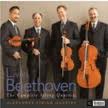 Ludwig van Beethoven: Complete String Quartets, Alexander String Quartet, (Foghorn Classics CD1996, CD1999, CD2002). I’m still getting familiar with this new addition to my several sets of the Beethoven quartets. The way the Alexander interprets this music, the exciting blend of independence and unity among the four players, as well as the meticulous way these CDs were recorded, have provided a wealth of information about the structure and content of these quartets. If I were to summarize in a single word what I look for in reproduced music, presence would be my word of choice. Other qualities—frequency range, dynamic range, nuance, imaging, sound stage—are all contributory, but secondary, to the illusion of presence. How real does it feel?
Ludwig van Beethoven: Complete String Quartets, Alexander String Quartet, (Foghorn Classics CD1996, CD1999, CD2002). I’m still getting familiar with this new addition to my several sets of the Beethoven quartets. The way the Alexander interprets this music, the exciting blend of independence and unity among the four players, as well as the meticulous way these CDs were recorded, have provided a wealth of information about the structure and content of these quartets. If I were to summarize in a single word what I look for in reproduced music, presence would be my word of choice. Other qualities—frequency range, dynamic range, nuance, imaging, sound stage—are all contributory, but secondary, to the illusion of presence. How real does it feel?
And it is precisely this quality that distinguishes the Reference cord from the Signature. With the Reference the instruments and the space around them have a finer level of definition in terms of both physical dimension and sonority. They are simply more there, present and physically real. It’s not that the Signatures no longer sound good to me, but rather that a level of clarity and palpability has gone missing. I don’t know if the electrodynamics involved in the enhanced skin treatment can affect transient response, but I wouldn’t be surprised if such were the case. This might account for the clearer “bite” of the horsehair into the string, the greater palpability and the sense of increased bass response.
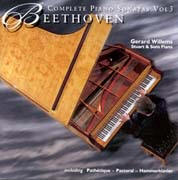 Ludwig van Beethoven: Piano Sonatas, Gerard Willems, piano (ABC Classics 465 264-2). I usually revisit this recording in my reviews because of the special qualities of the Stuart & Sons pianoforte. The agraffe invented by Wayne Stuart applies vertical rather than lateral pressure on the strings at the bridge, which maintains the initial vertical plane of vibration, unlike the traditional pair of lateral pins that cause strings to wander into a elliptical pattern and give up energy in the process. The strings sustain longer and have richer harmonics. Stuart’s voicing is also non-traditional, different ranges of the keyboard having distinct tonal characteristics, distinct sonorities, something that the Steinway Company (and all traditional manufacturers) shun. I’ve waxed so poetically about this instrument and the nuances various cables or electronics have revealed that it’s almost embarrassing to state that the Reference cord is significantly superior to the Signature. There seems to be a small but impressive trove of additional nuance, additional clues about the piano, rendering it more real, more (that word again) present. The pianoforte is unique in being stringed and percussive; its physicality is an essential part of the excitement and pleasure. Looked at from this vantage point, the Reference cord clearly conveys more of that physicality, and hence more excitement and musical pleasure.
Ludwig van Beethoven: Piano Sonatas, Gerard Willems, piano (ABC Classics 465 264-2). I usually revisit this recording in my reviews because of the special qualities of the Stuart & Sons pianoforte. The agraffe invented by Wayne Stuart applies vertical rather than lateral pressure on the strings at the bridge, which maintains the initial vertical plane of vibration, unlike the traditional pair of lateral pins that cause strings to wander into a elliptical pattern and give up energy in the process. The strings sustain longer and have richer harmonics. Stuart’s voicing is also non-traditional, different ranges of the keyboard having distinct tonal characteristics, distinct sonorities, something that the Steinway Company (and all traditional manufacturers) shun. I’ve waxed so poetically about this instrument and the nuances various cables or electronics have revealed that it’s almost embarrassing to state that the Reference cord is significantly superior to the Signature. There seems to be a small but impressive trove of additional nuance, additional clues about the piano, rendering it more real, more (that word again) present. The pianoforte is unique in being stringed and percussive; its physicality is an essential part of the excitement and pleasure. Looked at from this vantage point, the Reference cord clearly conveys more of that physicality, and hence more excitement and musical pleasure.
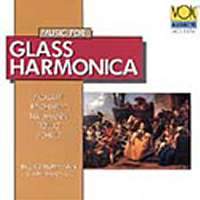 Music for Glass Harmonica; Mozart: K.617, K.617a, Bruno Hoffmann, et al (Vox Allegretto ACD8174). Benjamin Franklin invented the glass harmonica, a musical instrument that enjoyed a brief popularity in Europe and America. Fortunately for us, it caught Mozart’s attention and he left us three wonderful, small chamber compositions for this unique instrument. (The other composers on this disk are unknown to me; the additional music not, in my humble opinion, of great moment.) If you’ve ever seen someone on television rubbing the edges of wine glasses filled with varying levels of water, you know what a glass harmonica sounds like. The glass harmonica and Wolfgang Mozart is a match made in heaven. This is magical music into which Mozart, with the integrity and unstinting generosity of genius, poured his heart. As was the case with the Beethoven sonatas, there are additional sonic clues with the Reference cord, rendering the delicate sound of the vibrating glass with greater detail and a more radiant sense of presence. Simply gorgeous.
Music for Glass Harmonica; Mozart: K.617, K.617a, Bruno Hoffmann, et al (Vox Allegretto ACD8174). Benjamin Franklin invented the glass harmonica, a musical instrument that enjoyed a brief popularity in Europe and America. Fortunately for us, it caught Mozart’s attention and he left us three wonderful, small chamber compositions for this unique instrument. (The other composers on this disk are unknown to me; the additional music not, in my humble opinion, of great moment.) If you’ve ever seen someone on television rubbing the edges of wine glasses filled with varying levels of water, you know what a glass harmonica sounds like. The glass harmonica and Wolfgang Mozart is a match made in heaven. This is magical music into which Mozart, with the integrity and unstinting generosity of genius, poured his heart. As was the case with the Beethoven sonatas, there are additional sonic clues with the Reference cord, rendering the delicate sound of the vibrating glass with greater detail and a more radiant sense of presence. Simply gorgeous.
I suppose different reviewers listen for different things. Just as non-reviewers do. Which is why you’ve got to make your own choices when you shop for equipment. Any absolute yardstick has proven over the decades to be elusive. But in my book, the LessLoss Reference cords are the finest I’ve heard in this system. If you’ve never heard what great power cords can do, or if you’re an old hand with many expensive power cords, I think you’ll find the latest DFPC a revelation. 

LessLoss Audio
LessLoss DFPC Reference AC cords: Price $1641.00 each
Address:
1 Polk Street
San Francisco, CA 94102
P.D. 1231
Kaunas, LT 46005
USA: +1 (310) 801-7089
liudasliudas
Email: info@lessloss.com
Website: www.lessloss.com
Stereo Times Masthead
Publisher/Founder
Clement Perry
Editor
Dave Thomas
Senior Editors
Frank Alles, Mike Girardi, Russell Lichter, Terry London, Moreno Mitchell, Paul Szabady, Bill Wells, Mike Wright, and Stephen Yan,
Current Contributors
David Abramson, Tim Barrall, Dave Allison, Ron Cook, Lewis Dardick, John Hoffman, Dan Secula, Don Shaulis, Greg Simmons, Eric Teh, Greg Voth, Richard Willie, Ed Van Winkle, Rob Dockery, Richard Doran, and Daveed Turek
Site Management Clement Perry
Ad Designer: Martin Perry





Be the first to comment on: LessLoss New DFPC Reference AC Cords